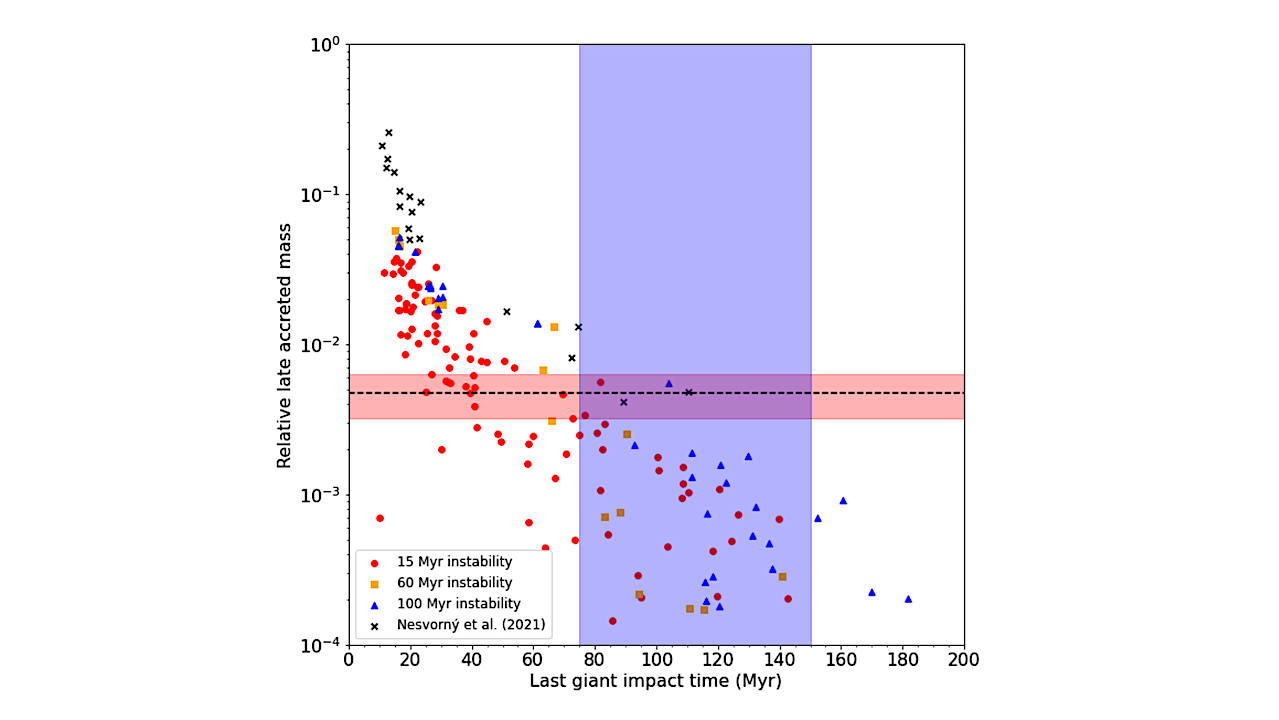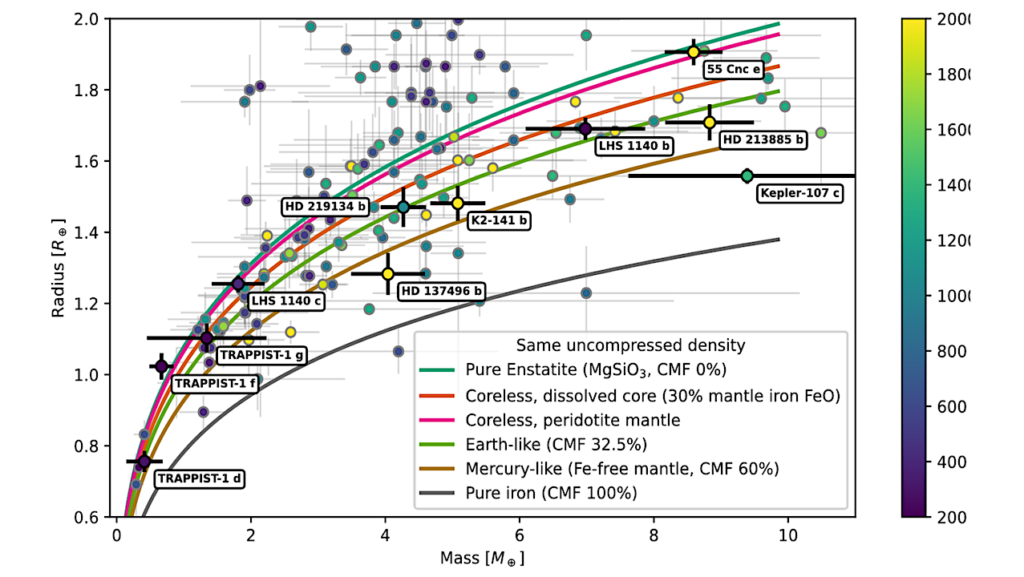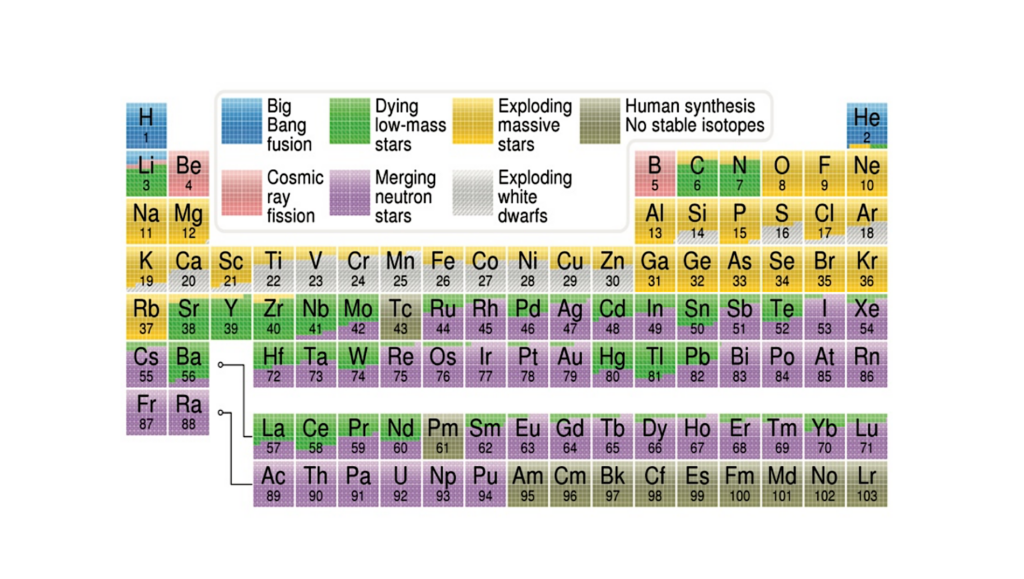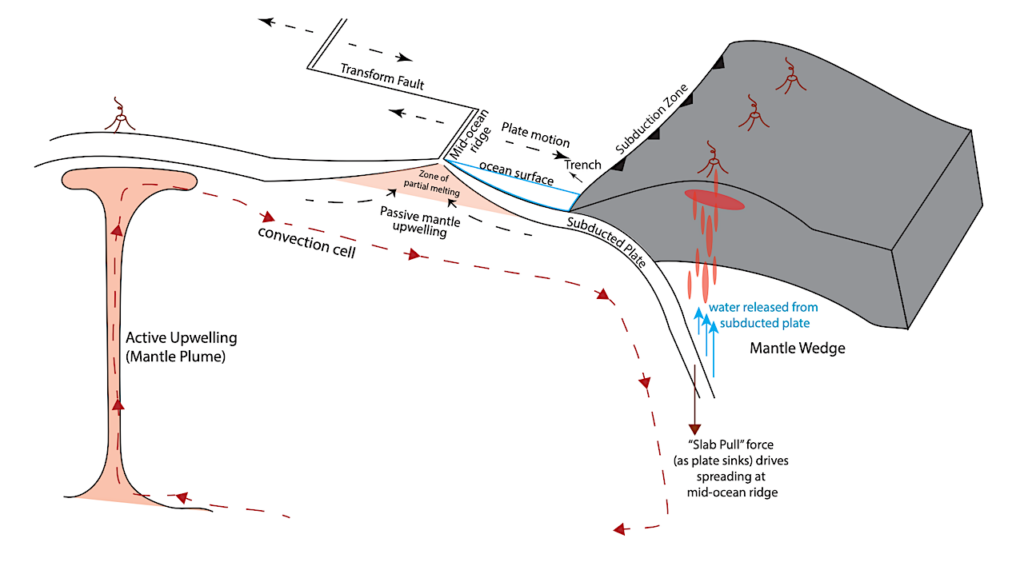Terrestrial Planet Formation From A Ring: Long-term Simulations Accounting For The Giant Planet Instability

The process leading to the formation of the terrestrial planet remains elusive. In a previous publication, we have shown that, if the first generation of planetesimals forms in a ring at about 1 AU and the gas disk’s density peaks at the ring location, planetary embryos of a few martian masses can grow and remain in the ring.
In this work, we extend our simulations beyond the gas-disk stage, covering 200 Myr and accounting for the phase of giant planet instability, assumed to happen at different times. About half of the simulations form a pair of Venus and Earth analogues and, independently, about 10% form a Mars analogue.
We find that the timing of the giant planet instability affects statistically the terrestrial system’s excitation state and the timing of the last giant impacts. Hence a late instability (about 60 to 100 Myr after the Solar system’s birth) is more consistent with a late Moon-formation time, as suggested by radioactive chronometers.
However, the late veneer mass (LVM: mass accreted after the last giant impact) of Earth-sized planets suffering a giant impact after 80 My is usually an order of magnitude lower than the value inferred from geochemistry. In addition, the final angular momentum deficit (AMD) of the terrestrial planets tends to be too high.
We tested the effect on the final AMD of the generation of debris during collisions and found that it is too small to change these conclusions. We argue that the best-case scenario is that the Moon-forming event occurred between 50 and 80 My, possibly just following the giant planet instability.
J.M.Y. Woo, D. Nesvorny, J. Scora, A. Morbidelli
Comments: Accepted for publication in Icarus
Subjects: Earth and Planetary Astrophysics (astro-ph.EP)
Cite as: arXiv:2404.17259 [astro-ph.EP (or arXiv:2404.17259v1 [astro-ph.EP] for this version)
Submission history
From: Alessandro Morbidelli
[v1] Fri, 26 Apr 2024 08:58:53 UTC (1,281 KB)
https://arxiv.org/abs/2404.17259
Astrobiology, astrogeology,








